Cooking with flowers is a simple way to add beauty, fragrance, and flavor to your meals. The right blossoms can turn ordinary dishes into something truly special, offering both visual charm and unique tastes.
Many edible flowers are packed with nutrients, while others bring subtle flavors that pair beautifully with both sweet and savory recipes.
You can sprinkle petals over salads, stir them into jams, bake them into cakes, or float them in refreshing drinks. Each flower adds its own personality to your cooking, from peppery nasturtiums to sweet honeysuckle.
Before you start, always confirm that the flowers are edible and free from pesticides. Once you try them, you’ll see how easy it is to transform your meals with a touch of floral magic.
#1 Nasturtium
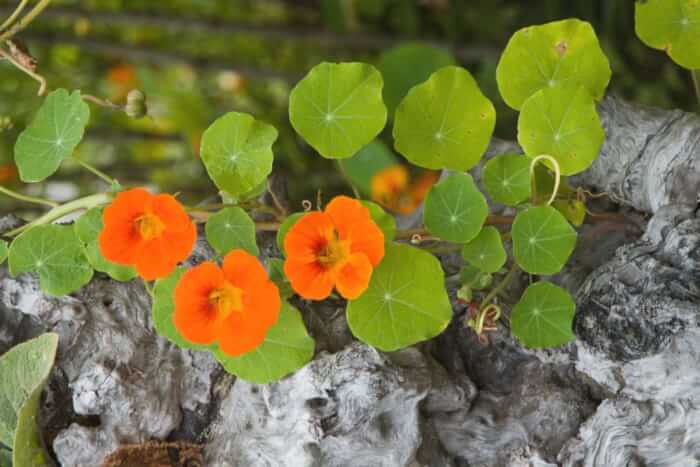
Nasturtium blossoms bring a cheerful splash of orange, red, and yellow to your plate. Their flavor is mildly peppery, similar to watercress, making them excellent in fresh salads and as toppings for canapés.
Rich in vitamin C, these flowers offer both beauty and nutrition. Sow seeds directly in pots or garden beds for easy growth.
Keep the soil slightly moist and harvest flowers once they open fully. Adding a few blooms to cream cheese or cakes instantly brightens the dish.
#2 Borage
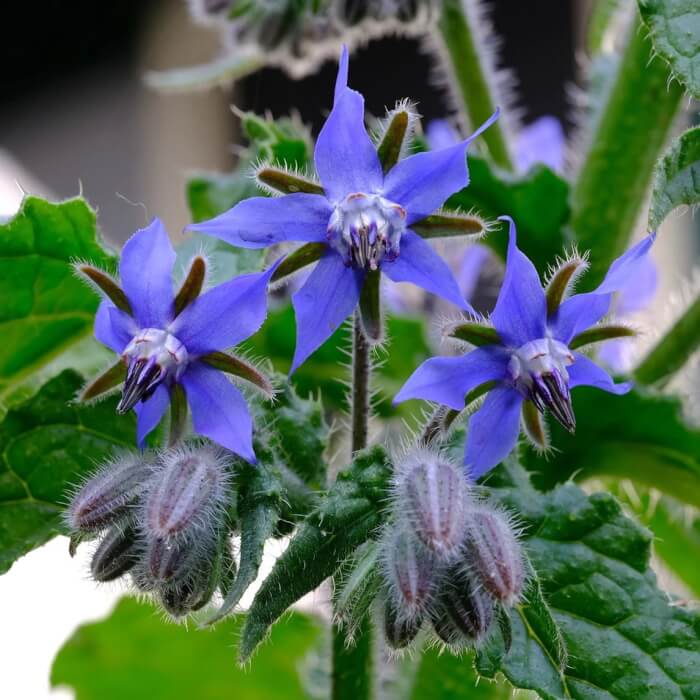
Borage flowers look like tiny blue stars and taste refreshing with a cucumber-like flavor. They’re ideal for garnishing cocktails, chilled soups, or even ice cubes for summer drinks. The plant thrives in sunny spots and requires minimal care.
Simply sow seeds in well-draining soil and water when the topsoil feels dry. You can pick blooms regularly as they open. Tossing them on a green salad gives both beauty and a crisp, cooling taste.
#3 Lavender
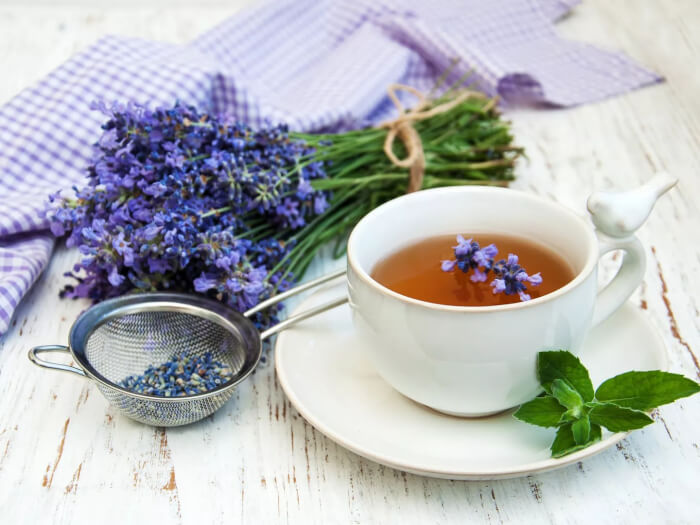
Lavender adds a gentle floral taste with hints of mint and rosemary. Its purple petals are perfect for flavoring baked goods, syrups, or teas. To use, strip the tiny petals from the stems and sprinkle sparingly, as the flavor can be strong.
Grow lavender in sunny containers with sandy soil for best results. Water lightly, since it prefers drier conditions. A lavender-infused cake or lemonade feels instantly elegant and soothing.
#4 Garland Chrysanthemum
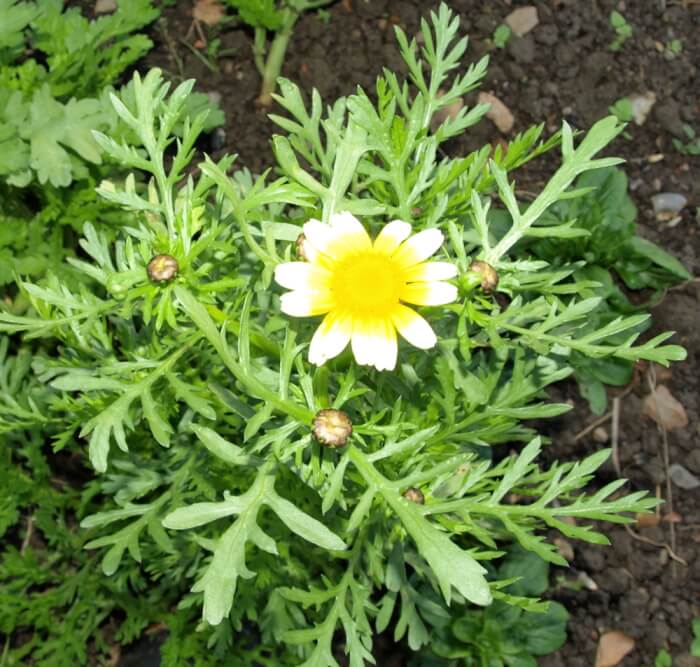
Garland Chrysanthemum produces daisy-like blooms with a bold, spicy flavor. The flowers are often used in Asian cuisine to flavor soups and hotpots. You can also scatter petals over savory pastries for a colorful garnish.
Grow it in partial sun with moist, well-drained soil. Harvest blooms just as they open for peak flavor. While the taste is distinct, its striking appearance makes any dish stand out beautifully.
#5 Cape Jasmine
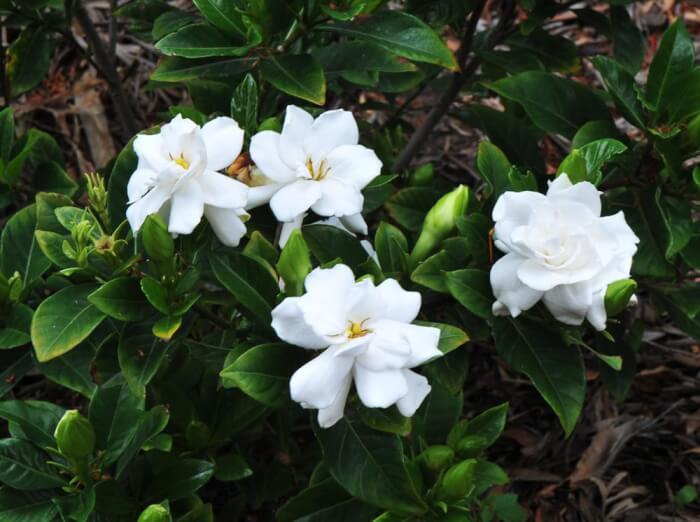
Cape Jasmine, also known as gardenia, offers pure white flowers with a sweet, heady fragrance. Shredded petals can be added to cakes or used in jams for a gentle floral sweetness.
These flowers also look stunning as edible garnishes on desserts. Grow them in rich, acidic soil with consistent moisture.
Place them in bright but indirect light for best blooming. Their fragrance and beauty make them unforgettable in the kitchen.
#6 Marigold

Marigold flowers add bright yellow and orange hues with a tangy, citrus-like flavor. Some varieties can taste slightly bitter, so use them sparingly. They’re excellent for coloring rice dishes or adding zest to salads.
Sow seeds directly in pots or garden beds in full sun. Water regularly, but avoid overwatering. A few petals scattered over cakes or savory plates create a cheerful, festive effect.
#7 Tulip

Tulip petals bring a mild sweetness with a crisp texture, almost like lettuce. They can be used as natural cups for dips, spreads, or fresh cheeses. Before using, always remove the pollen and inner parts, keeping only the petals.
Tulips grow easily in cool climates and bloom in spring. Harvest petals fresh and rinse them gently before cooking. Their vibrant colors add an elegant touch to appetizers and desserts.
#8 Honeysuckle

Honeysuckle flowers are famous for their delicate honey-like flavor. You can use them to sweeten syrups, teas, or desserts naturally. Only the blossoms are edible, since the berries and stems can be toxic.
Plant honeysuckle on a trellis where it gets plenty of sunlight. Keep the soil moist to encourage blooms. Collect flowers in the morning when they are freshest and most fragrant.
#9 Rose
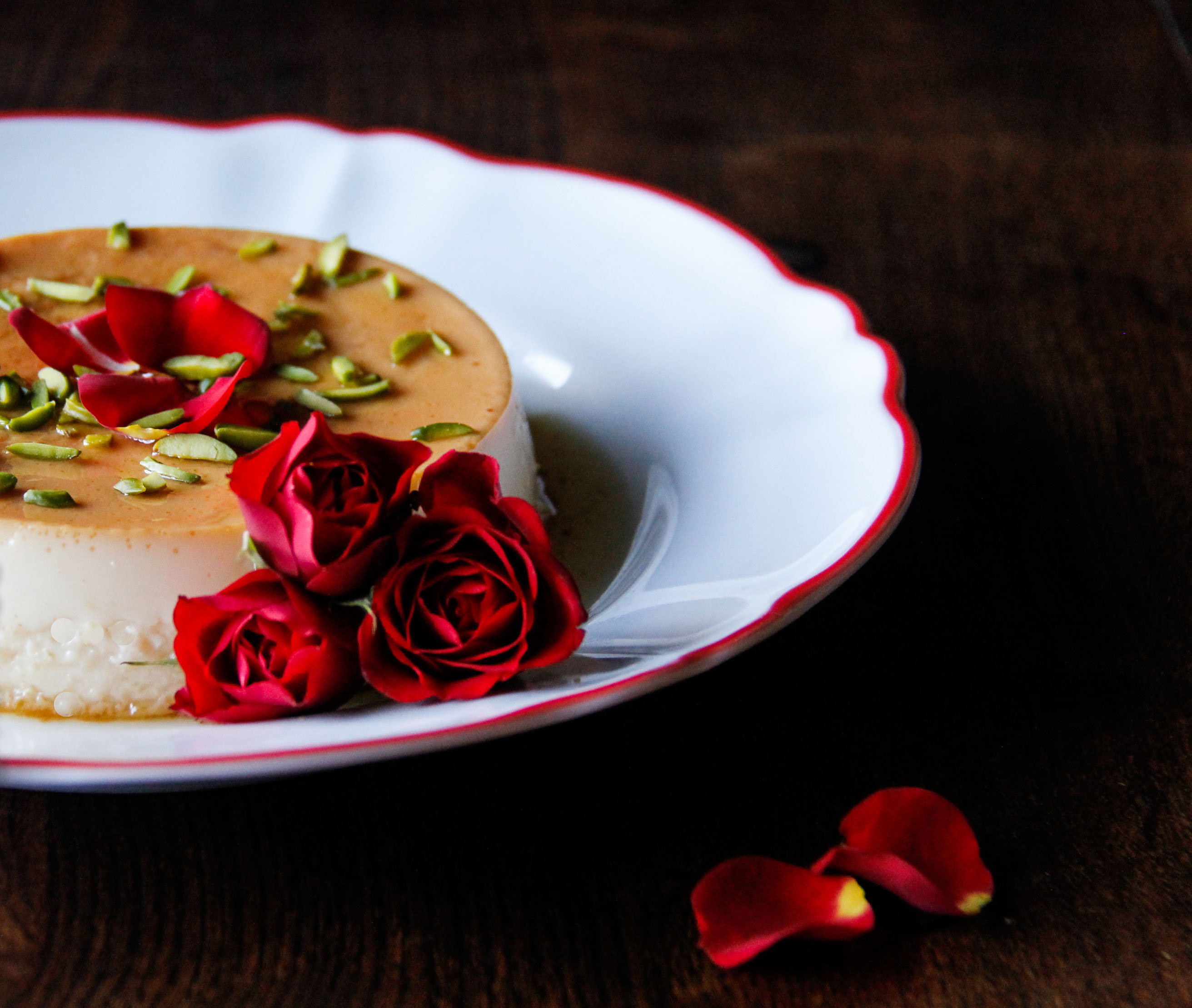
Roses are among the most popular edible flowers, offering a sweet, subtle flavor. The petals can be candied, mixed into jams, or scattered on cakes. For drinks, infuse petals into syrups or ice cubes.
Choose unsprayed roses, as commercial varieties may carry chemicals. Grow them in sunny spots with well-drained soil and prune regularly for healthy blooms. A rose-petal garnish instantly adds romance to any dish.
#10 Hibiscus

Hibiscus flowers stand out with their bold, tangy flavor that resembles cranberries. They’re perfect for teas, jams, or desserts that need a tart twist. You can dry the petals to use year-round.
Plant hibiscus in full sun and water often to keep it thriving. The large blossoms make dramatic garnishes for cakes and drinks. Their bright red color is as appealing as their refreshing taste.
#11 Lilac
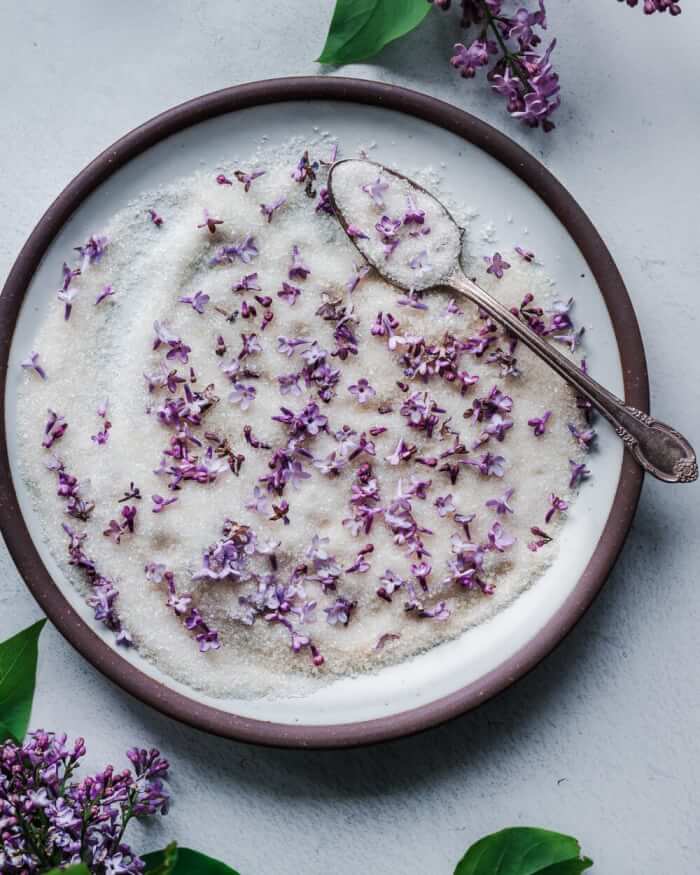
Lilac flowers bring a refreshing lemony taste with a hint of bitterness. Their pastel shades range from pink to lavender, making them lovely for decorating desserts. You can also freeze petals in ice cubes for cocktails.
Plant lilacs in sunny gardens with well-drained soil for abundant blooms. Harvest clusters when fully opened and rinse gently before use. Adding lilacs to syrups or baked goods creates a subtle, floral surprise.
#12 Dahlia

Dahlia petals have an unusual flavor that mixes apple, carrot, and spice. They can be used in salads or as an edible garnish for cakes. The plant also produces tubers that taste like sweet potatoes and can be cooked in savory dishes.
Dahlias need sunny spots and fertile soil to thrive. Water regularly to keep the plants blooming. Experimenting with their flavors brings fun variety to your cooking.
#13 Peony

Peony blossoms are both fragrant and flavorful, tasting somewhat like strawberries or peaches. Their large, ruffled petals look gorgeous on cakes and pastries. You can also steep them in syrups for a delicate flavor.
Grow peonies in well-draining soil with full sun to partial shade. Harvest flowers early in the day when the petals are fresh. Their elegance and sweet taste make them perfect for special occasions.
#14 Pot Marigold

Also known as calendula, pot marigold flowers carry a tangy, slightly peppery flavor. They’re often called “poor man’s saffron” because the petals can add a golden hue to rice and soups.
Dry the petals for use as a seasoning throughout the year. Plant calendula in full sun and water regularly for continuous blooms. Scatter fresh petals over salads or baked dishes for a pop of color. Its versatility makes it a kitchen favorite.
#15 Pansy
 Pansy flowers are edible and come in striking colors like purple, yellow, and white. They have a mild, lettuce-like flavor that works well in both sweet and savory recipes. You can use them to decorate cakes, salads, or even chilled drinks.
Pansy flowers are edible and come in striking colors like purple, yellow, and white. They have a mild, lettuce-like flavor that works well in both sweet and savory recipes. You can use them to decorate cakes, salads, or even chilled drinks.
Plant pansies in cool seasons with partial sun for best results. Keep the soil moist but not soggy. Their cheerful look brings a playful touch to everyday meals.
